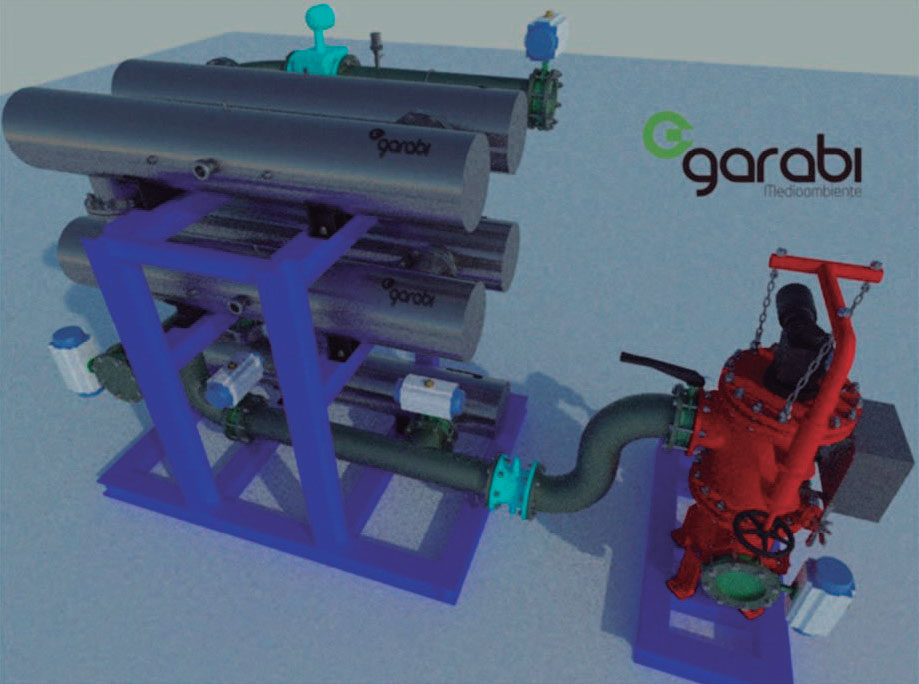BUAP
ECO-DESIGN OF BALLAST WATER TREATMENT SYSTEMS
AROUND 10 MILLION TONNES OF BALLAST WATER ARE TRANSPORTED AROUND THE WORLD EACH YEAR, along with animals, plankton, bacteria and viruses, which are discharged into remote waters when ballast water is landed. The UN considers this unintentional spread of so-called invasive species to be one of the main threats to the marine environment. International maritime authorities require the implementation of Ballast Water Treatment Systems (BWTS) from September 2024 on all ships carrying ballast water between different areas. The development of accredited BWTS products started in 2016, with no national agents or manufacturers.
The Ballast Water Purification Plant (BUAP, for its acronym in Basque) 250 is a ballast water treatment plant located between the ballast pumps and the ballast tanks along the water intake route, and between the deballasting pumps and the ballast water outlet to the sea on the discharge route. It handles all the ballast water flowing in each cycle through the different unit processes (filtration, disinfection, monitoring and auxiliary cycles) that make it up, and encompasses elements such as physical modularity and high-quality treatment.
For the BUAP project, GARABI, a business group specialised in developing and implementing industrial technologies, collaborated with NAVIERA MURUETA, as activity and business partner, and the BASQUE MARITIME FORUM for the promotion and dissemination of the project in the sector, as well as IK INGENIERIA, a consultancy specialised in LCA.

DRIVING FACTOR


 OBJECTIVES
OBJECTIVES
- Create a BWTS eco-design that meets the requirements of the new regulations in order to achieve type accreditation.
 RESULTS
RESULTS
- Determination of the main environmental impact of BUAP 250 prototype: energy used during the operational phase (90%)
- Reorganisation of cycle flows to reduce energy consumption according to water quality.
- Implementation of new control, measurement and automation components (turbidimeter, valves, automatism and control), in an attempt to minimise energy consumption to the minimum necessary.
- Integration of operational and physical modularity (equipment adapts operation to the conditions of the water to be treated and adapts to the space conditions in vessels).
- Increased durability, estimated at more than 20 years in the operational phase.
- Reduced environmental impact by 36% in CO2 equivalent in the use phase, and 33% in all life cycle phases.
 CONCLUSIONS
CONCLUSIONS
- The eco-design of BUAP equipment is eligible for an Environmental Product Declaration, which is particularly well suited to the current needs of the Basque sector and manufacturing industry.
- The development and construction of BUAP equipment is part of a new project to be addressed after BUAP completion.
ENVIRONMENTAL
TECHNICAL
ECONOMIC
COMMERCIAL
ON THE MARKET


